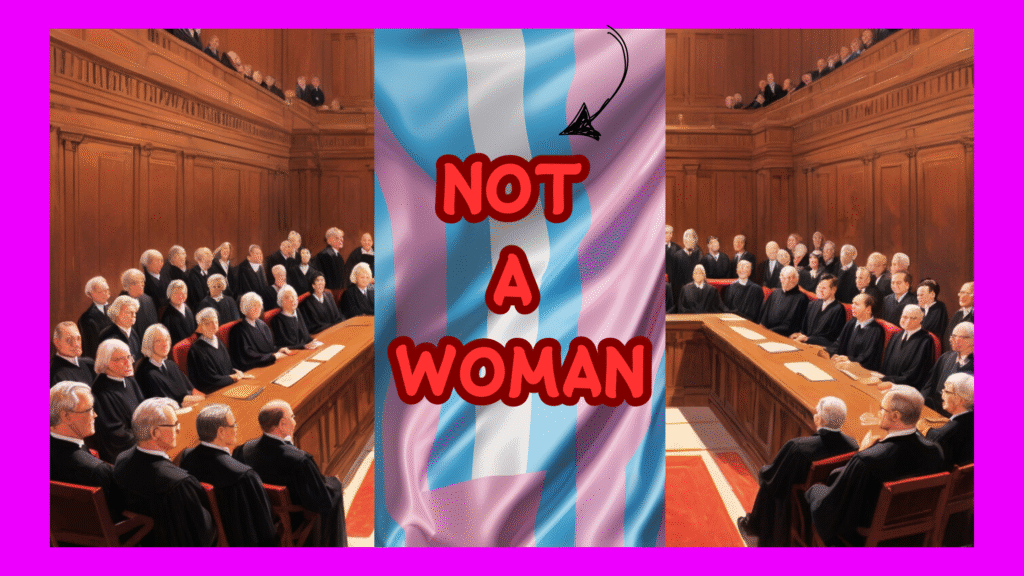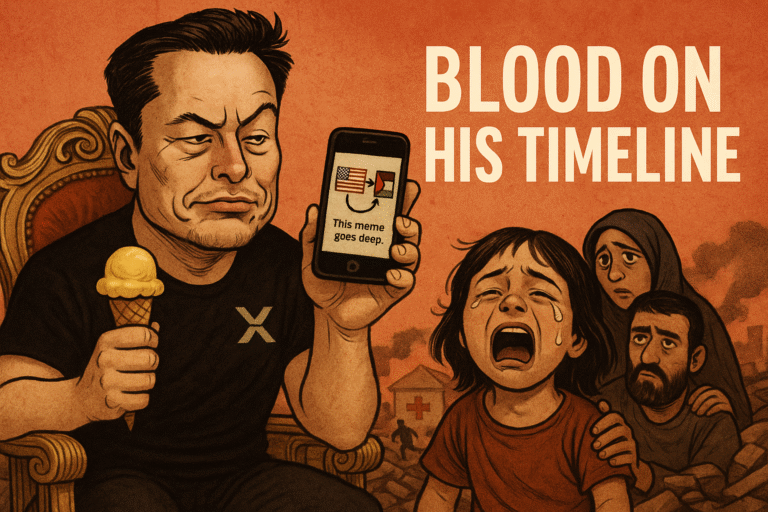
In a ruling that’s somehow controversial in 2025, the UK Supreme Court has unanimously affirmed what most of human history took for granted: women are female.
This landmark decision explicitly states that transgender women – even those with Gender Recognition Certificates – don’t fall under the legal definition of “woman” in the Equality Act 2010.
Cue the gasps of horror. Cue the comparisons to dystopian fiction. Cue the endless think pieces about how acknowledging biological reality is somehow one step away from The Handmaid’s Tale.
What Actually Happened Here?
For those who missed this legal drama, the case started when a group called For Women Scotland challenged Scottish laws that aimed to increase female representation on public boards. The Scottish government had argued that anyone with a Gender Recognition Certificate (GRC)—even a man—should be counted as a woman for the purpose of these quotas.
All five Supreme Court judges—in a rare moment of judicial unanimity—said no. Lord Patrick Hodge delivered the verdict with crystal clarity: “The provisions relating to sex discrimination can only be interpreted as referring to biological sex.”
Translation: Biology matters in law. Having documents that say you’re a woman doesn’t actually make you female. Who would’ve thought?
Why This Is Actually Good News for Women
Remember when everyone understood what “woman” meant? The court just restored that clarity. For Women Scotland celebrated the ruling, saying it provides “absolute clarity in law regarding what a woman is. We know for sure now that we are referring to the biological sex class of women. And that when we see a women-only space, it means exactly that. Just women. No men. Not even if they have a Gender Recognition Certificate.”
It’s almost refreshing to hear a court affirm that words should mean something specific. Revolutionary concept, I know.
The Sports Reality Check: Where Testosterone, Not Identity, Makes the Difference
Let’s be real for a second. There’s a reason we separate sports by sex, and it’s not because of patriarchal oppression. It’s because of differences like muscle mass, bone density, lung capacity, and cardiovascular health—factors that don’t magically disappear with hormone therapy. It turns out male and female bodies are actually different.
Female athletes have already lost scholarships, medals, and records to competitors with male biological advantages. Some have even sustained serious injuries in contact sports. This ruling gives legal backing to the fair competition categories women fought decades to establish.
Remember Lia Thomas? The swimmer who competed for years as a male athlete, ranking #462 nationally, before transitioning and suddenly rocketing to #1 against women? The pattern isn’t subtle: mediocre male athlete transitions, becomes dominant female athlete. This isn’t progress; it’s males reclaiming medals that female sports were specifically created to provide.
The stark reality is that male puberty bestows physical advantages that don’t vanish with hormone therapy. Denser bones. Larger hearts and lungs. Different muscle fiber composition. Taller height. Bigger hands and feet. These aren’t prejudices – they’re biological facts that create an uneven playing field.
In contact sports like MMA and rugby, athletes have raised concerns about safety, citing significant physical differences between competitors. Are we really going to pretend that safety concerns in contact sports are just bigotry in disguise?
The UK’s sporting bodies have already taken notice. The Football Association is booting transgender women from women’s football starting June 2025, and the England and Wales Cricket Board has followed suit. These aren’t acts of discrimination – they’re an acknowledgment that preserving fair competition for females requires recognizing biological differences.
When a sporting category exists specifically because of biological disadvantage, pretending that biology doesn’t matter defeats the entire purpose. Female athletes have spent decades fighting for their own competitions, funding, and recognition. Watching that hard-won territory being reclaimed by biological males under a new banner isn’t equality – it’s erasure with a progressive paint job.
Single-Sex Spaces: Because Sometimes Women Need Women-Only Places
Think about what women’s shelters and prisons actually are for a moment. They’re spaces created specifically because of the vulnerability of females to male violence. The whole point of their existence is recognition of sex-based risk.
The Supreme Court ruling specifically acknowledges that single-sex services “can only be interpreted by reference to biological sex.” This matters tremendously because these aren’t hypothetical concerns – they’re lived realities for women in tremendously vulnerable positions.
Let me introduce you to Karen White. A transgender woman with intact male genitalia who was placed in a women’s prison in the UK and – surprise! – sexually assaulted female inmates. Or consider the cases in Canada where female prisoners became pregnant after housing transgender inmates. Are we still pretending these concerns are just transphobic fever dreams?
The Equality and Human Rights Commission’s guidance following the ruling states what common sense would dictate: “Trans women (biological men) should not be permitted to use women’s facilities” as this would compromise the single-sex nature of these spaces.
When a rape survivor seeks counseling in a women-only support group, is it “inclusive” to force her to share that therapeutic space with someone who has male anatomy? When a woman flees her abusive husband to a shelter, should she have to explain why she’s uncomfortable sharing sleeping quarters with someone who has male genitalia?
The Data Debacle: You Can’t Measure What You Can’t Define
The ruling also affects something most people don’t think about: data collection. But this matters enormously. If we can’t define who is male and who is female in law, how do we track sex discrimination? How do we develop healthcare policies? How do we understand crime patterns?
Before this ruling, we were drifting into absurdist territory. Medical forms replacing “women” with “people with cervixes.” Cancer screenings inviting “everyone with a cervix.” Universities reporting male sex crimes as “female” if the perpetrator identified as a woman.
This isn’t just linguistic silliness – it has real consequences. If healthcare data conflates males and females based on self-identification, we lose valuable sex-specific insights that save lives. If crime statistics categorize offenders by gender identity rather than sex, we obscure patterns that matter for policy development.
The Office for Statistics Regulation now recommends collecting both biological sex and gender identity data when necessary – a sensible approach that acknowledges both realities without conflating them. This is what an actual inclusive approach looks like: adding categories rather than erasing meaningful distinctions.
The Revealing Reactions: When “Inclusion” Means Silencing Women
The reaction to this ruling has been, well, predictable. Twitter (sorry, “X”) nearly collapsed under the weight of outrage, with some comparing this legal clarification to various historical atrocities – because apparently, defining legal terms clearly is now equivalent to the worst human rights violations in history. Sure, Karen.
What’s more illuminating than the ruling itself is the response to it. Women’s rights groups celebrated it as a return to sanity. Author J.K. Rowling called it a win for “ordinary women.” Meanwhile, transgender advocacy organizations acted as if the sky was falling.
What’s particularly telling is how women who support this ruling are being treated. Express relief that women’s sex-based rights are being protected, and you’re instantly labeled a bigot, a TERF, a transphobe – the list of pejoratives is endless. Female academics have lost jobs for stating biological facts, and women have been investigated by police for tweets saying “only women have cervixes.” Women’s rights advocates have received death and rape threats for defending sex-based protections.
Notice a pattern? The very women who fought for sex-based protections are now told they’re bigots for wanting to maintain them. The cruelest irony is watching young women being told that prioritizing their own safety, privacy, and fair competition is “exclusionary” and “hateful.”
The message is clear: biological women should sit down, shut up, and never question whether their rights matter anymore. The irony of silencing women in the name of progress is apparently lost on many.
We’d love to hear your thoughts, so don’t forget to drop a comment below and join the conversation!




